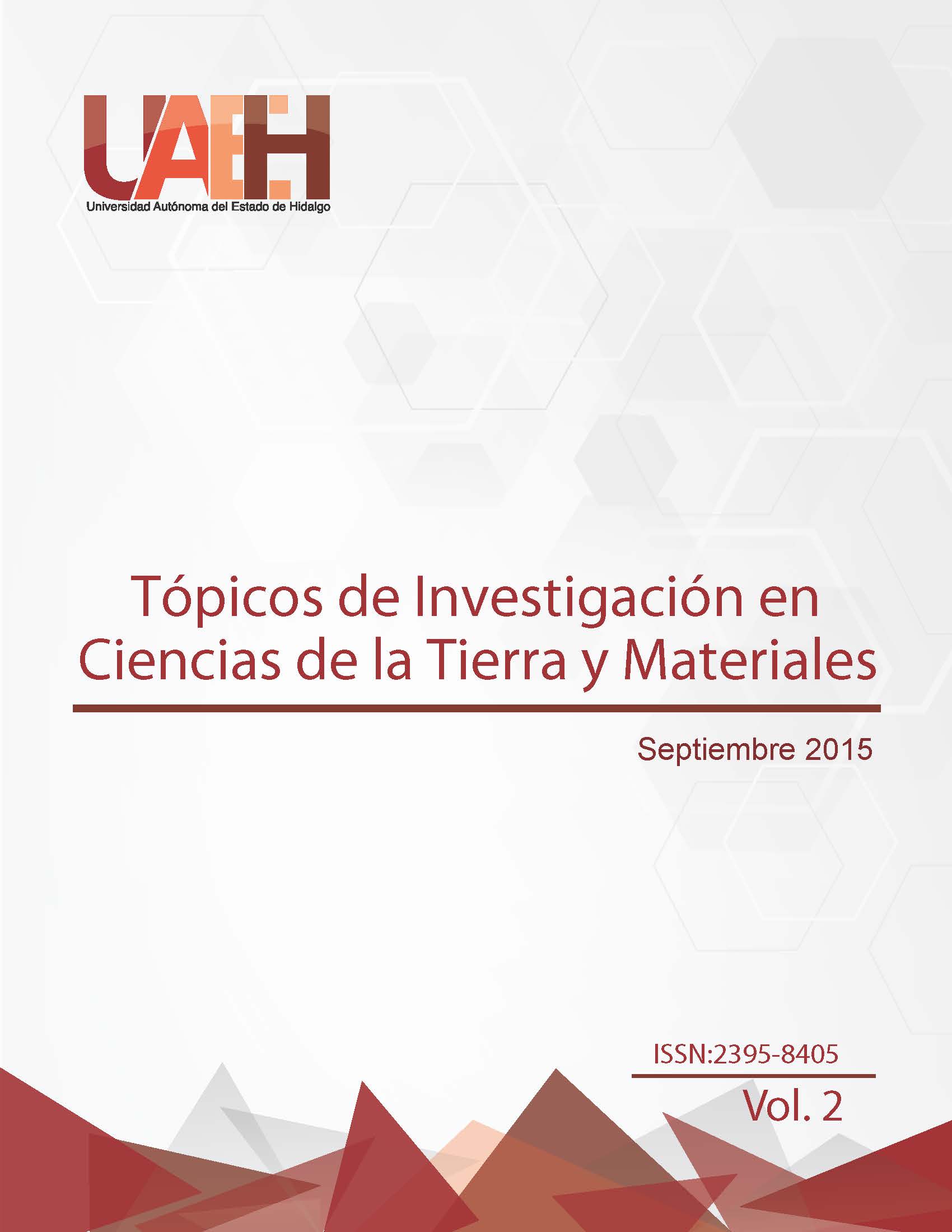Study of the recovery of Ag (I) from a zinc sulfide concentrate in S2O32- -O2 medium
DOI:
https://doi.org/10.29057/aactm.v2i2.9703Keywords:
Dissolution, Silver, Zinc, Concentrated, ThiosulfateAbstract
This paper presents a study of leaching of Ag (I) with sodium thiosulfate from zinc sulfide concentrate. The variables studied were the effect of temperature (298, 303, 313, 323 and 333 K) and particle size effect (-33, 33, 48, 53, 75, 106 microns) in the S2O32--O2 system. In order to detect the elemental composition and the species present in the concentrate, it was conducted chemical and mineralogical characterization of concentrate through the following techniques: Inductively coupled plasma spectroscopy (ICP), Atomic Absorption Spectroscopy (AAS), X-Ray Diffraction (XRD), Scanning Electron Microscopy-Energy-dispersive X-ray spectroscopy (SEM-EDS) and Polarization Optical Microscopy (POM). We found that the mineralogical phase containing silver is AgAsS2, same that was used to perform the thermodynamic simulation according to pH, using the software HSC Chemistry 5.11 and through the building of an Eh-pH diagram at 298 K. The experimental dissolution of Ag (I) was performed using a concentration of 0.50 M of S2O32-, a partial oxygen pressure of 1 atm and a concentration of sodium hydroxide 0.1 M (pH = 9, Eh = 1.24 volts). The effect of temperature on leaching of the precious metal was examined and a maximum dissolution of 97.42% of Ag (I) in 6 hours at 333 K and a particle size of 75 microns was examined. For the solution at different particle size, the maximum dissolution of silver at room temperature was 93% in 6 hours at a particle diameter of less than 33 microns.
Downloads
Publication Facts
Reviewer profiles N/A
Author statements
Indexed in
- Academic society
- N/A
References
2. HARUNOBU ARIMA, TOYOHISA FUJITA and WAN-TAI YEN. Using Nickel as a Catalyst in Ammonium Thiosulfate Leaching for Gold Extraction Materials Transactions. 2004, Vol. 45, No. 2, p. 516- 525.
3. ZHANG S. Oxidation of Refractory Gold Concentrates and Simultaneous Dissolution of Gold in Aerated Alkaline Solutions. Ph. D. Thesis. Murdoch University Western Australia. 2004, p. 18.
4. ABBRUZZESE C., FORNARI P., MASSIDDA R., VEGLIÓ F. and UBALDINI S.,Thiosulphate leaching for gold hydrometallurgy. Hydrometallurgy, 1995, No. 39, p. 265-276.
5. HERRERA M. N., ESCOBAR B., PARRA N., GONZALEZ C. and VARGAS T. Minerals & Metallurgical Processing. 1998, Vol. 15(2), p. 15–19.
6. LEWIS R. J. Hazardous Chemicals Desk Reference, 4th Edition, International Thomson Publishing Company, NY, 1997.
7. LUNA, R. M., LAPIDUS G. T. Cyanidation Kinetics of Silver Sulfide. Hidrometallurgy. 2000, Vol. 56, p. 171-188.
8. ARIMA H., FUJITA T. and YEN W. T. SME Annual Meeting & Exhibit, Phoenix, AZ, preprint 02-39); Minerals & Metallurgical Processing. 2003, Vol. 20(2), p. 81–92.
9. AYLMORE M.G. and MUIR, D.M., Thiosulfate leaching of gold. A review”, Mineral Engineering. 2001, No. 14, p. 135-174.
10. ALONSO-GÓMEZ A. R. and LAPIDUS G.T., Inhibition of lead solubilization during the leaching of gold and silver in ammoniacal thiosulfate solutions (effect of phosphate addition). Hydrometallurgy. 2009, Vol.99, p. 89-96.
11. PUENTE-SILLER D.M., FUENTES-ACEITUNO J.C. and NAVA-ALONSO F. A kinetic–thermodynamic study of silver leaching in thiosulfate–copper–ammonia–EDTA solutions. Hydrometallurgy. 2014, Vol. 149, p. 1–11.
12. GROSSE C.A., DICINOSKI G.W., SHAW M. J. and HADDAD P.R. Leaching and recovery of gold using ammoniacal thiosulfate leach liquors. Hydrometallurgy. 2003, Vol. 69, p. 1-21.
13. HERNÁNDEZ J., PATINO F., RIVERA I., REYES I.A., FLORES M.U., JUAREZ J.C., REYES M. Leaching kinetics in cyanide media of Ag contained in the industrial miningmetallurgical wastes in the state of Hidalgo, Mexico. International Journal of Mining Science and Technology. 2014, Vol. 24, p.689–694.
14. JUÁREZ J.C., RIVERA I., PATIÑO F., REYES. M.I., Efecto de la temperatura y concentración de tiosulfatos sobre la velocidad de disolución de plata contenida en desechos mineros usando soluciones S2O3 2--O2-Zn2+.Información Tecnológica. 2012, Vol. 23(4), p. 133-138.
15. BALLESTER A., VERDEJA L. and SANCHO, J., Metalurgia Extractiva Vol. II Procesos de Obtención. Ed. Síntesis. 2000. Vol. 2, p. 42-49.
16. MORENO R.T., TÉLLEZ J. T. Y MONROY y FERNÁNDEZ M. G., Influencia de los minerales de los jales en la bioaccesibilidad de arsénico, plomo, zinc y cadmio en el distrito minero Zimapán. Revista internacional de Contaminación Ambiental. 2012, Vol. 28, p.203-218.
17. GEMMELL J.B. Ore microscopy study of the Concordia NW block. El monte mine, Zimapán district, México. Cía. Fresnillo. 1983, Vol. 16, p. 28.
18. MEINERT L.D., GROVES D., KEAYS R. and RAMSAY R. Gold skarn deposits. Geology and exploration criteria. Economic Geology. 1989, Vol. 6, p. 537-552.


















